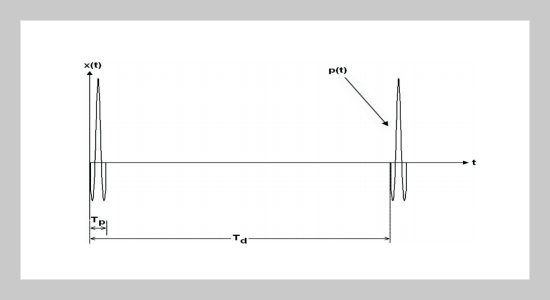REFERENCES
- [1] K. M. Nasr, “Hybrid channel modelling for ultra-wideband portable multimedia applications,” Microwaves , Antennas and Propagation, IET, Vol. 2, Issue 3, pp. 229-235, April. 2008.
- [2] B. Mielczarek, M. O. Wessman and A. Svensson, “Performance of coherent UWB Rake receivers with channel estimators,” IEEE 58th Vehicular Technology Conference, pp. 1880 - 1884, Oct. 2003.
- [3] M. Hamalainen and J. Iinatti, “Analysis of Interference on DS-UWB System in AWGN Channel,” 2005 IEEE International Conference on Ultra-Wideband, pp. 719 - 723, 2005.
- [4] S. Kandukuri and S. Boyd, “Optimal power control in interference-limited fading wireless channels with outage-probability specifications,” IEEE Transactions on Wireless Communications, pp. 46 - 55, 2002.
- [5] Z. Irahhauten, H. Nikookar, and G.J.M. Janssen, ”An overview of ultra wide band indoor channel measurements and modeling,” IEEE Microwave and Wireless Components Letters, see also IEEE Microwave and Guided Wave Letters], Vol. 14, pp. 386 -388, Aug. 2004.
- [6] G. Liang and H. L. Bertoni, ”A new approach to 3-D ray tracing for propagation prediction in cities,” IEEE Trans. Antennas Propagat., Vol. 46, pp. 853-863, June 1998.
- [7] Y. Zhang, “Ultra-Wide Bandwidth Channel Analysis In Time Domain Using 3-D Ray Tracing,” High Frequency Postgraduate Student Colloquium of IEEE, pp. 6-7, Sep. 2004.
- [8] S. Woo, H. Yang, M. Park, and B. Kang, “Phase-Included Simulation of UWB channel, ”IEICE Trans. Commum., Vol. E88-B, pp.1294-1297, March 2005.
- [9] Karla I. Ziri-Castro, William G. Scanlon, and Noel E. Evans, “Prediction of Variation in MIMO Channel Capacity for the Populated Indoor Environment Using a Radar Cross-Section-Based Pedestrian Model,” IEEE Transactions on Wireless Communications, Vol. 4, pp. 1186 - 1194, May 2005.
- [10] S. H. Chen and S. K. Jeng, “An SBR/Image Approach for Indoor Radio Propagation in a Corridor,” IEICE Trans. Electron., Vol. E78-C, pp. 1058-1062, 1995.
- [11] S. H. Chen and S. K. Jeng, “SBR Image Approach for Radio Wave Propagation in Tunnels With and Without Traffic,” IEEE Trans. Veh. Technol., Vol. 45, pp. 570-578, 1996.
- [12] Susana Loredo, Alberto Rodríguez-Alonso and Rafael P. Torres, “Indoor MIMO Channel modeling by Rigorous GO/UTD-Based Ray Tracing,” IEEE Trans. Veh. Technol., vol. 57, no. 2, Mar. 2008, pp. 680-692.
- [13] Constantine A. Balanis, Advanced Engineering Electromagnetics, John Wiley & Sons, 1989.
- [14] I. Oppermann, M. Hamalainen, and J. Iinatti, UWB Theory and Applications, John Wiley & Sons, 2004
- [15] E. W. Kamen and B. S. Heck, Fundamentals of Signals and Systems Using the Web and Matlab, Prentice-Hall, 2000.
- [16] M. Gabriella, D. Benedetto, and G. Giancola, Understanding Ultra Wide Band Radio Fundamentals, Prentice Hall, 2004.
- [17] E. A. Homier and R. A. Scholtz, “Rapid acquisition of ultra-wideband signals in the dense multi-path channel,” IEEE Conference on Ultra Wideband Systems and Technologies, pp. 105 – 109, 2002.
- [18] D. J. Gargin, “A fast and reliable acquisition scheme for detecting ultra wide-band impulse radio signals in the presence of multi-path and multiple access interference” 2004 International Workshop on Ultra Wideband Systems, pp. 106 - 110, May 2004.
- [19] Yan Zhao, Yang Hao, Akram Alomainy, and Clive Parini, “UWB on-body radio channel modeling using ray theory and subband FDTD method,” IEEE Transactions on Microwave Theory and Techniques, Vol. 54, pp. 1827-1835, June 2006
- [20] R. Michael Buehrer, Ahmad Safaai-Jazi, William Davis, and Dennis Sweeney, “Ultra-wideband Propagation Measurements and Modeling Final Report,” DARPA NETEX Program Virginia Tech, Chapter 3, pp. 38-216, Jan 2004
- [21] A. Muqaibel, A. Safaai-Jazi, A. Bayram, A.M. Attiya and S.M. Riad, “Ultrawideband through-the-wall propagation,” IEE Proceedings Microwaves, Antennas and Propagation, pp. 581-588, Dec. 2005.
- [22] T. S. Rappaport, Wireless Communications: Principles and Practice, Prentice Hall PTR, Upper Saddle River, NJ, USA, 2nd edition, 2002.
















